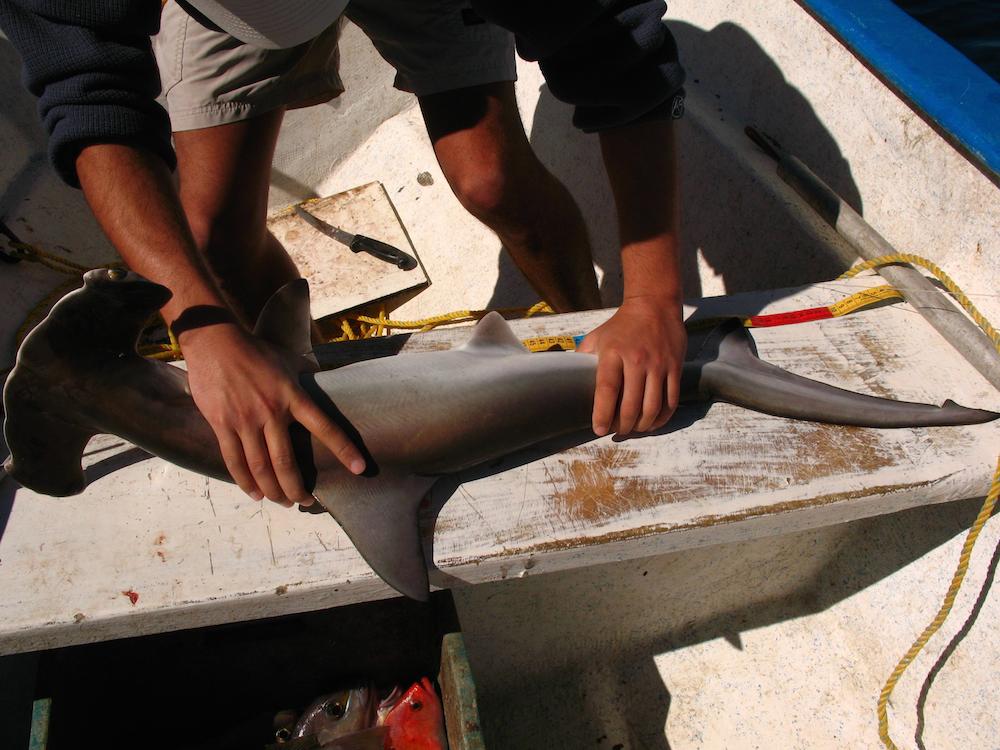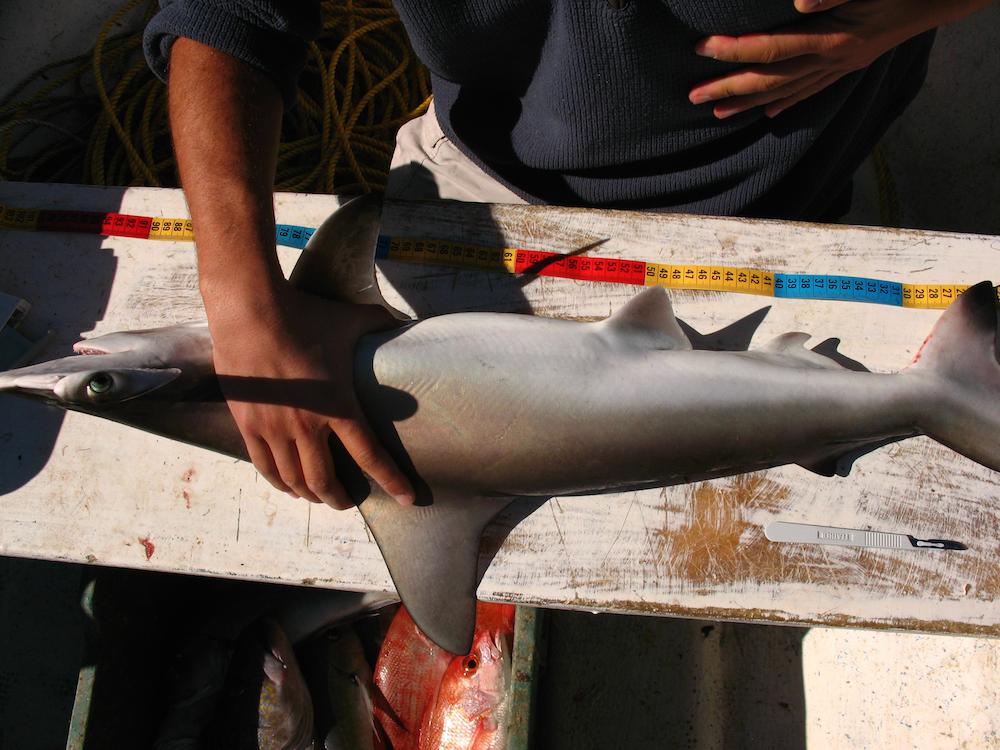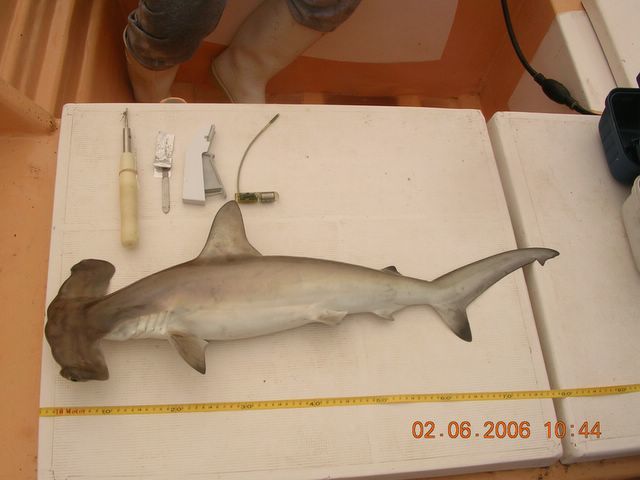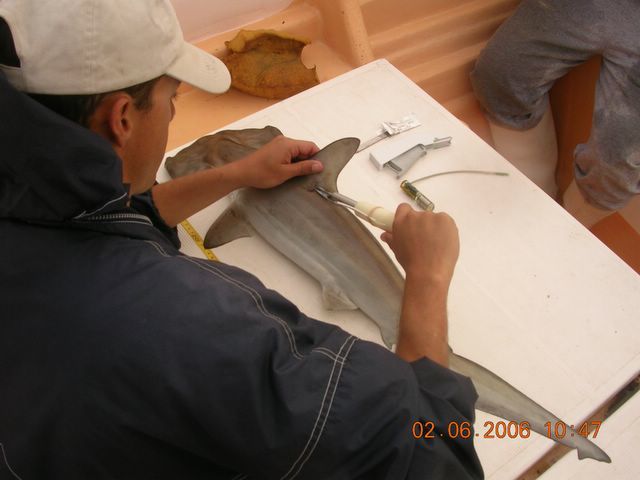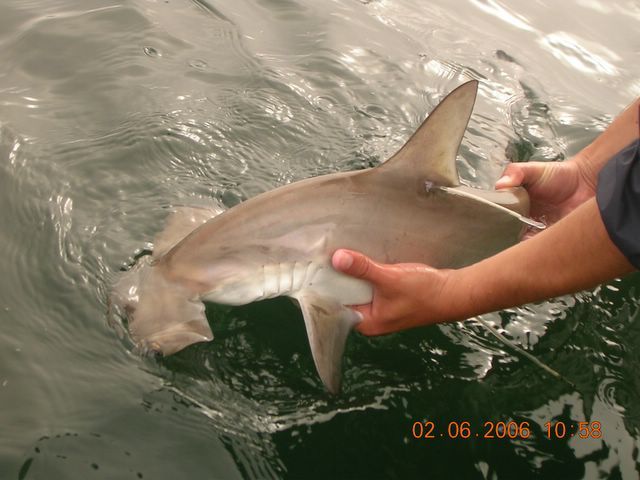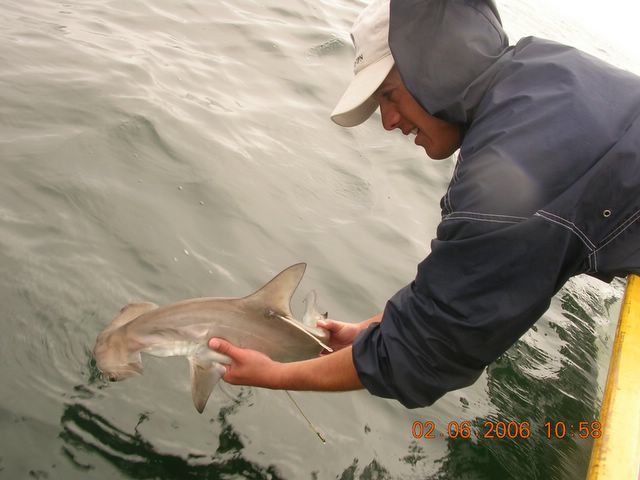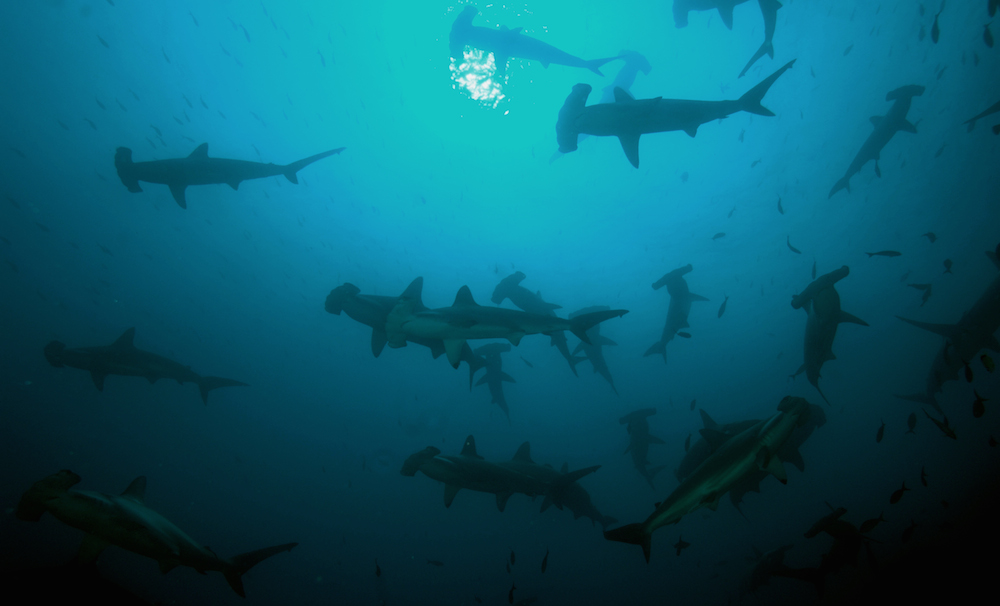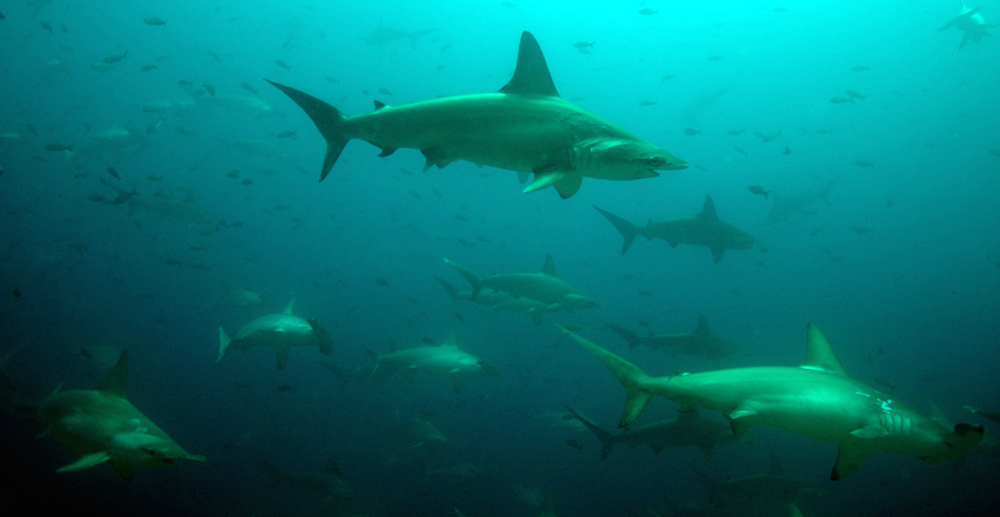Photos: How to Tag a Hammerhead Shark
Using a small electronic tracker, researchers were able to reconstruct the migratory path of a young female scalloped hammerhead shark living in the Gulf of California. Juvenile hammerheads are scarce and fragile, so researchers had to work fast during the tagging process. Check out these photos of how scientists were able to study the migratory wanderings of a hammerhead shark. [Read full story on the scalloped hammerhead shark]
Measuring tape
Lead researcher Mauricio Hoyos, who works with Pelagios Kakunja, a marine conservation nonprofit, gently measures a wild hammerhead that was fished out the Gulf of California, which separates the Baja California peninsula from mainland Mexico. Hoyos placed electronic trackers on three juvenile sharks to help marine biologists learn where these sharks swim during their adolescence. (Photo credit: Mauricio Hoyos)
Tagging preparation
Hoyos steadies the young hammerhead shark before placing a tag near the fin on its back. Hammerhead sharks were once plentiful in the Gulf of California, but fishermen who overfish or mistakenly net the sharks as bycatch substantially decreased the shark's numbers. (Photo credit: Mauricio Hoyos)
Quick procedure
The tagging tools are placed next to one of the three hammerhead sharks Hoyos found in the Gulf of California. The tracker, on the right, recorded depth, sea temperature and light levels every 30 seconds, which helped the researchers calculate the time of day and location of the sharks over time. (Photo credit: Mauricio Hoyos)
Get the world’s most fascinating discoveries delivered straight to your inbox.
Hold still
Hoyos inserts the tag into one of the juvenile sharks. The trackers did not transmit data to satellites, so the researchers had to find the sharks again to collect the data. Of the three sharks tagged, Hoyos only learned about the whereabouts of one, a female who traveled 2,082 miles (3,350 kilometers) in roughly 10.5 months. (Photo credit: Mauricio Hoyos)
Watery return
Hoyos places the young shark back into the water after tagging it. Baby hammerhead sharks typically live in coastal nurseries for the first year or two of their lives. Then, females tend to venture out and begin eating more prey, likely so they can bulk up and prepare for mating and reproduction. (Photo credit: Mauricio Hoyos)
Catch and release
The female hammerhead tracked by Hoyos swam northward along the coast for several months, before swimming out into open water. During the day, she likely swam with other juvenile and adult female hammerhead sharks. At night, the tracker shows that she dove into deeper and colder waters, likely to feast on squid. (Photo credit: Mauricio Hoyos)
Hammerhead school
Female hammerhead sharks usually swim in schools during daylight hours. They may swim to deeper waters laden with prey so that they can grow in size and then jockey for power within the school. Size and dominance may help them attract strong male hammerhead mates, the researchers said. (Photo credit: Alex Hearn)
Group swimming
Researchers found that the juvenile female hammerhead shark swam both near and far from the coast, which suggests that sharks need more protected areas from fishing vessels. But experts say that larger studies are needed to determine the common migratory pathways of young hammerhead sharks. (Photo credit: Alex Hearn)
Follow Laura Geggel on Twitter @LauraGeggel. Follow Live Science @livescience, Facebook & Google+.

Laura is the managing editor at Live Science. She also runs the archaeology section and the Life's Little Mysteries series. Her work has appeared in The New York Times, Scholastic, Popular Science and Spectrum, a site on autism research. She has won multiple awards from the Society of Professional Journalists and the Washington Newspaper Publishers Association for her reporting at a weekly newspaper near Seattle. Laura holds a bachelor's degree in English literature and psychology from Washington University in St. Louis and a master's degree in science writing from NYU.


